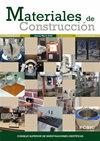用液态碱硅酸盐制备β-白橄榄石
IF 1.5
4区 工程技术
Q3 CONSTRUCTION & BUILDING TECHNOLOGY
引用次数: 8
摘要
本研究的目的是利用粉末石灰石、无定形二氧化硅和液态碱硅酸盐通过固态反应制备β-贝利特。将原料混合,将混合物凝聚,然后进行燃烧。通过X射线衍射分析和扫描电子显微镜对所得样品进行表征。还测定了β-贝利特样品中游离石灰的含量。研究了CaO/SiO2比(1.6–2.1)、燃烧温度(800–1400°C)、不同原料(硅灰、合成二氧化硅、硅酸钾、硅酸钠、氢氧化钾)的使用和燃烧时间(0.5–16h)对游离石灰含量和矿物组成的影响。最纯净的-贝利特样品是由粉末状石灰石、硅灰和比例为CaO/SiO2=2的液态硅酸钾的混合物在1100至1300°C的温度下燃烧2小时以上制备的。CaO/SiO2比例的降低导致了rankinite的形成,而燃烧温度的降低则导致了硅灰石的形成。本文章由计算机程序翻译,如有差异,请以英文原文为准。
Preparation of β-belite using liquid alkali silicates
The aim of this study is the preparation of β-belite by a solid-state reaction using powdered limestone, amorphous silica and liquid alkali silicates. The raw materials were blended, the mixtures were agglomerated and then burnt. The resulting samples were characterized by X-ray diffraction analysis and scanning electron microscopy. Free lime content in the β-belite samples was also determined. The effects of CaO/SiO 2 ratio (1.6–2.1), burning temperature (800–1400 °C), utilization of different raw materials (silica fume, synthetic silica, potassium silicate, sodium silicate, potassium hydroxide) and burning time (0.5–16 h) on free lime content and mineralogical composition were investigated. The purest ?-belite samples were prepared from a mixture of powdered limestone, silica fume and liquid potassium silicate with a ratio CaO/SiO 2 = 2 by burning at temperatures between 1100 and 1300 °C for more than 2 h. Decreasing of the CaO/SiO 2 ratio led to rankinite formation and lower a burning temperature led to the formation of wollastonite.
求助全文
通过发布文献求助,成功后即可免费获取论文全文。
去求助
来源期刊

Materiales de Construccion
工程技术-材料科学:综合
CiteScore
3.20
自引率
9.50%
发文量
38
审稿时长
>12 weeks
期刊介绍:
Materiales de Construcción is a quarterly, scientific Journal published in English, intended for researchers, plant technicians and other professionals engaged in the area of Construction, Materials Science and Technology. Scientific articles focus mainly on:
- Physics and chemistry of the formation of cement and other binders.
- Cement and concrete. Components (aggregate, admixtures, additions and similar). Behaviour and properties.
- Durability and corrosion of other construction materials.
- Restoration and conservation of the materials in heritage monuments.
- Weathering and the deterioration of construction materials.
- Use of industrial waste and by-products in construction.
- Manufacture and properties of other construction materials, such as: gypsum/plaster, lime%2
 求助内容:
求助内容: 应助结果提醒方式:
应助结果提醒方式:


